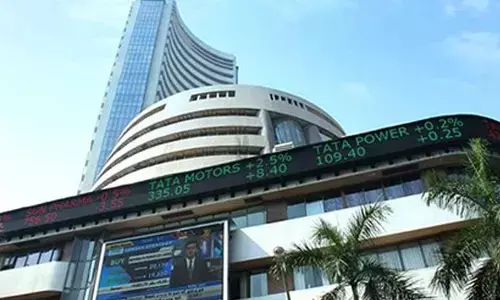Rajan’s swan song

Belying expectations in some quarters of a dovish stance in the last monetary policy review by India’s ‘rock star’ central banker, Raghuram Rajan has retained his hawkish stance. Repurchase or repo rate that banks pay to take short-term loans from the RBI is kept unchanged at 6.5 per cent. The cash reserve ratio, too, which specifies the percentage of funds that banks should keep in liquid form,
Belying expectations in some quarters of a dovish stance in the last monetary policy review by India’s ‘rock star’ central banker, Raghuram Rajan has retained his hawkish stance. Repurchase or repo rate that banks pay to take short-term loans from the RBI is kept unchanged at 6.5 per cent. The cash reserve ratio, too, which specifies the percentage of funds that banks should keep in liquid form, also remains at 4 per cent of deposits.
The policy measure reiterates the last June 7 policy concern over inflationary trends. It also underlines risks that the government would face in meeting the March 2017 inflation target of 5 per cent. After climbing to a 22-month high at 5.8 per cent in June, inflation is only accelerating, leaving no room for any dovish stance.
The RBI, while taking note of surplus in average monsoon fall, pointed to the rising prices of pulses and cereals, as the run-up in recent CPI inflation is mainly driven by food. It also cited the likely impact of the 7th Pay Commission.
What is implicit in RBI policy is that the government should boost agri sector, revive micro and small enterprises in non-urban centres to sustain rural economy so as to create demand for industry. In view of persisting industrial weakness, the major infra spend promised at over Rs 2 lakh crore in budget should roll out soon. A normal monsoon is helpless in absence of these measures.
Rajan is laying down office on September 4. What is the legacy being left behind by the globally renowned economist? He has made the monetary policy show its humane face. The wisdom of Rajan is borne by the government’s acceptance last week of a 4% inflation target for the next five years.
“While higher inflation might help a rich, highly-indebted industrialist because his debt comes down relative to sales revenues, it hurts the poor daily wage worker, whose wage is not indexed to inflation,” he had noted in June. It is not that Rajan had not been dovish. Repo was cut by 150 basis points since 2015. But banks passed on only 90 bps rate cuts.
Since assuming office, Rajan brought a lot of credibility to India’s central bank. He steered the rupee off a steep devaluation. Inflation has significantly come down from double digits.
Rajan is berated by his critics as not ‘pro-growth.’ But facts speak otherwise. High forex reserves at $365.4 billion, India’s fastest growth rate at 7.6% in FY16 from 6.5% in FY14, creation of a monetary policy committee to set interest rates, norms for new banks and payment banks etc happened during his term.
Current account deficit was around $320 million in March as against about $21.7 billion in July 2013. Rajan kicked off an unprecedented bank clean-up. The next Governor should continue with his mission of clean-up and make PSU banks catch up with private banks in catering to the credit needs of industry.
That repo cut is not a silver bullet to end country’s economic woes has been Rajan’s standpoint. And he stood the test of his times as RBI chief.
















